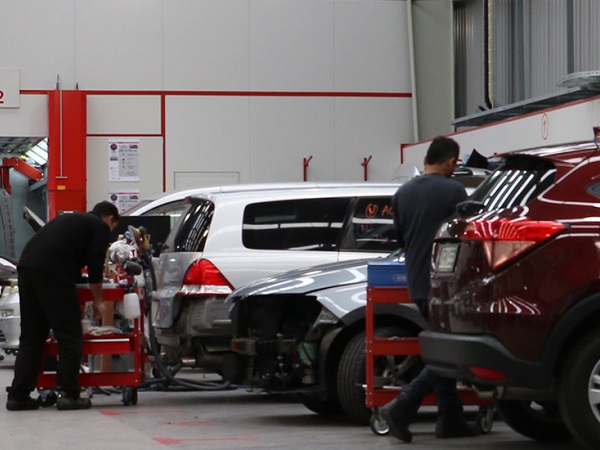Severe rain and weather: If you are a Vero customer and need to claim, fill out our online claims form Claims | Vero or contact your broker.
Vero Voice Blog
Why it was time for a new approach to disaster response
By Jimmy Higgins
Chief Executive Officer
17 November 2020
Earlier this month private insurers and EQC announced a new natural disaster response model that will fundamentally change the way we support customers who suffer house and land damage in a natural disaster.
Insurance is vitally important to New Zealanders given the risks we face from earthquakes and other natural disasters. This new agreement is a major milestone in our journey since the Canterbury earthquakes that will support New Zealand to mitigate and recover from these risks in the future.
I first arrived in New Zealand in 2012 to start building Vero’s Canterbury earthquake programme. At that time, I hadn’t fully realised the complexity and extent of the damage done to the city and surrounding regions, or the magnitude of the challenge ahead.
The earthquakes were unprecedented in terms of both the damage done and the level of insurance cover in the city. Ten years on, Vero has paid out $5 billion dollars to help get our customers back on their feet.
It quickly became apparent that one of the problems we faced was that New Zealand’s dual insurance model had never before been tested on this scale.
Under the EQC Act, customers with damaged homes had to first lodge a claim with EQC, which would cover damage to the home up to $100,000. EQC had to assess every residential claim in the region to determine whether the damage was likely to exceed this amount. Where damage was assessed to be over $100,000 customers were required to lodge a second claim with their private insurer who would cover the cost of damage over that cap.
This dual insurance model has served New Zealanders well in terms of the level of insurance cover the country has and the ability for New Zealanders to make claims for land damage – something that is not common anywhere else in the world. But in the aftermath of the Canterbury quakes it has also had a significant impact on the timely resolution of claims for customers.
The feedback we have consistently received following Canterbury is that customers wanted a much simpler and more efficient process. In addition to this, research and insights we commissioned showed the faster we could help customers get back on their feet, the greater the social and community benefits in terms of things like wellbeing, mental health and the local economy.
In their moment of truth, customers need their insurer to help them get their lives back to normal quickly and this is the defining principle by which Vero has continued to advocate for a new approach.
In 2016, a relatively small earthquake struck Christchurch on Valentine’s Day. Following this quake Vero collaborated with EQC on a pilot programme to trial a new approach to handling claims.
This pilot was extremely important in delivering insights and learnings that informed the response of the insurance industry later that year when a much larger quake struck Kaikoura on 14 November. Following this quake, private insurers and EQC developed a memorandum of understanding where insurers would manage home damage claims end to end, including the portions covered by EQC, on its behalf.
Once again, the industry learned a great deal and it was clear that this streamlined approach was a huge step forward in enabling us to look after customers.
Under the new natural disaster response model, we have refined this agreement further. Customers will now need to lodge only one claim, and private insurers will look after the entire home and land damage claim, including managing the EQC portions on its behalf. This agreement will give customers a single point of contact and enable insurers to look after the entire process, removing duplication, double-handling and uncertainty.
This month's announcement marks the culmination of many years of work and collaboration by the New Zealand insurance industry, and I am extremely proud of the role that Vero has played in bringing it to fruition.
I genuinely believe this agreement is a huge step in the right direction to enable us to respond faster, more efficiently and deliver more certainty for New Zealanders if we are unlucky enough to experience another major natural disaster.
When we started working on this many years ago, I said that in a natural disaster there is no shortage of good intentions from those involved – the question was whether the system was efficient and worked for customers.
As a company we will always have more work to do on improving how we deliver brilliant experiences, fair outcomes and support for our customers.
But the lessons we have learned, and the work we have done as a company and an industry, brings customers to the centre of New Zealand’s natural disaster model. I hope and believe that this new model will empower us to be there for our customers in the moments that matter.
The information in this article has been compiled from various sources and is intended to be factual information only. Full details of policy terms and conditions are available from Vero Insurance New Zealand Limited or your financial adviser. For advice on product suitability, please contact your financial adviser. While we take reasonable steps to ensure that the information contained in this article is accurate and up-to-date, it is subject to change without notice. Vero Insurance New Zealand and its related companies does/do not accept any responsibility or liability in connection with your use of or reliance on this article.



